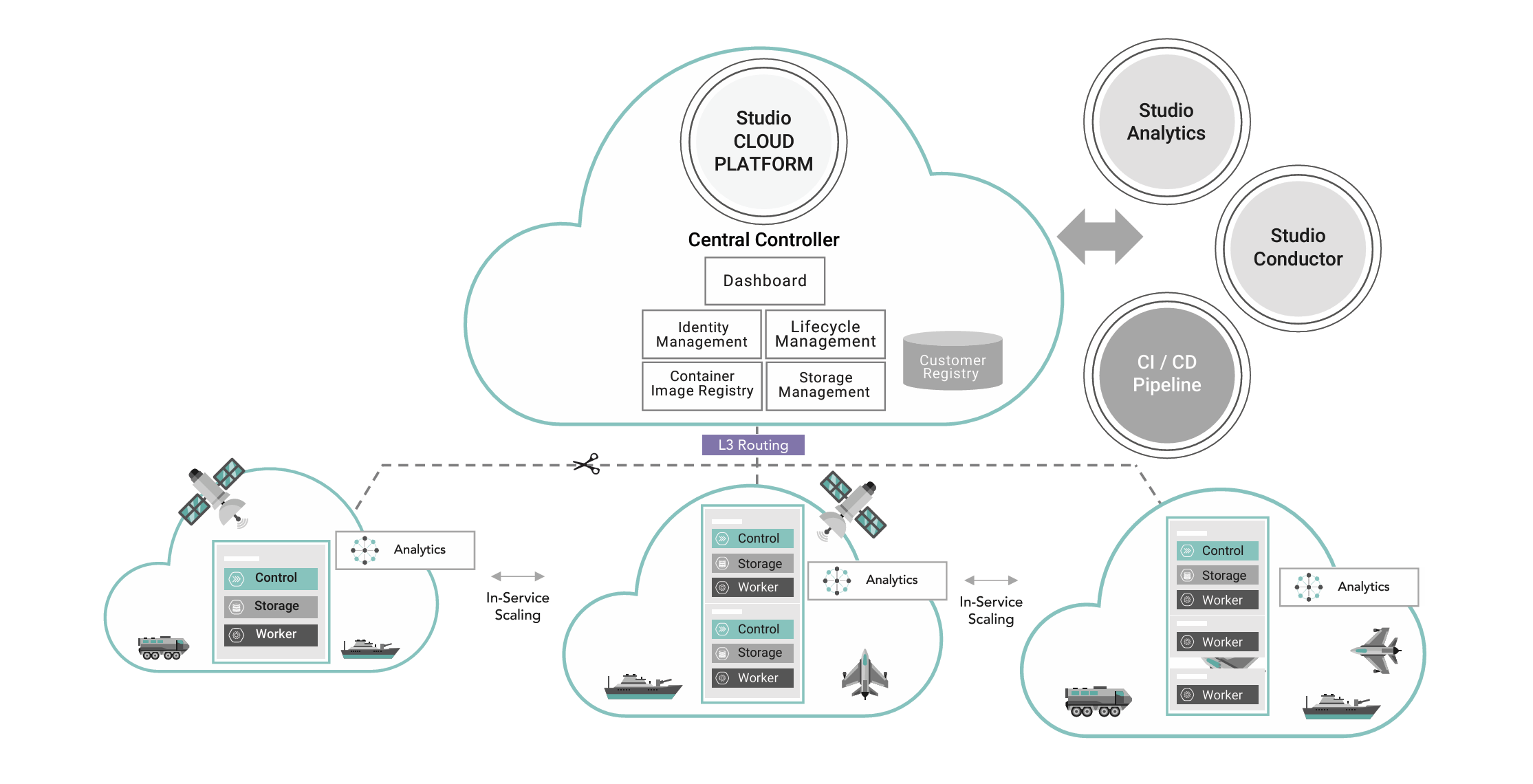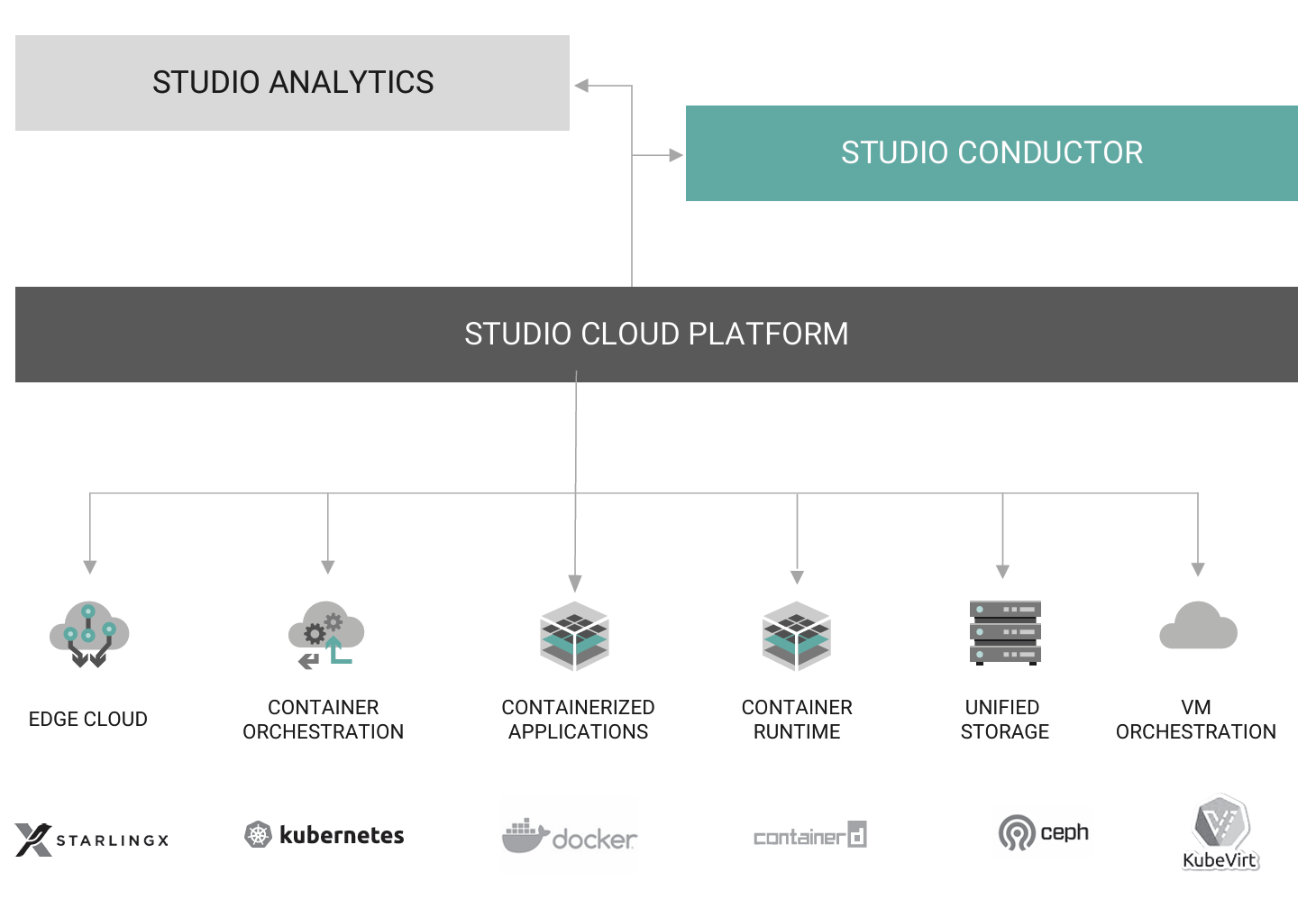Wind River Studio Operator Advances CJADC2 Operations
Meeting Department of Defense Needs at the Geo-distributed Edge
The mission of the Department of Defense Combined Joint All-Domain Command and Control (DoD CJADC2) is to achieve decision-making superiority powered by AI in near real time on a unified network that connects databases, sensors, weapons, and warfighters across all armed forces. This goal aligns perfectly with the intelligent edge and geo distributed cloud computing capabilities provided by Studio Operator.
In 2024, the United States Air Force plans to deliver prototypes of command-and-control center connectivity based on mission-critical cloud infrastructure. Cloud-based command and control intends to integrate a variety of air defense data sources to support homeland defense with near real-time decision making. The other armed forces are also undergoing the same edge transformation through initiatives including the U.S. Army’s Project Convergence, the U.S. Navy’s Project Overmatch, and the Space Development Agency’s National Defense Space Architecture (NDSA). U.S allies have their own initiatives, such as Combat Cloud, that are similar to CJADC2. They are also working with the U.S. to achieve interoperability with CJADC2.
Studio Operator provides features that speak directly to the needs of CJADC2:
Cloud-native design: Studio Cloud Platform provides a software-defined, cloud-native infra structure hardened for high-availability geo-dis tributed operation. Support for containers and Kubernetes is a fundamental requirement for the platform, necessary for mission-oriented, AI-enabled CJADC2 workloads.
Scalability: Scalability of the entire system (large number of geo-distributed locations) and scalability of the cluster at each location are both critical capabilities. Studio Operator supports scaling sites to meet the smaller com pute requirements at the far edge (for aircraft and ground vehicles, for example) and at more central locations such as command-and-control sites that might require many server-class plat forms. System scalability is essential to support the deployment and operation of tens, hundreds, or thousands of geo-distributed clouds. A major U.S. telecommunications operator is currently deploying Studio Cloud Platform at 30,000 sites, with more to come.
Small footprint: Scaling down is also important at the edge and is often driven by size, weight, and power (SWaP) requirements. Studio Cloud Platform can scale to a single node on a site at the edge, and on some processors it only requires a single core of overhead. This is much smaller than many Kubernetes-based clouds, which require multiple hosts for management and storage. Wind River is continuing to shrink the footprint even further and working to support more hetero geneous platforms to support CJADC2 goals.
Ultra-low latency: Ultra-low latency is critical in the DoD environment. Latency increases as a cloud grows geographically, yet reliable and immediate communication is a must, meaning that the far-edge infrastructure must react in microseconds. Studio Operator offers deterministic, tunable performance optimized for your specific configuration.
Autonomy: Distributed clouds must support sites that are limited in connectivity or even dis connected at times, without their operation being affected. This is a problem in critical infrastruc ture such as 5G networks, industrial facilities, and automotive; it is an even greater problem in CJADC2 situations, where the links may not only be limited by default (e.g., in satellite or point-to point links) but may also be contested or degrad ed by the need for mobility or by the tactical en vironment. Studio Operator is designed to allow every site to operate autonomously with minimal management traffic. If a site is disconnected, it continues to operate and will resynchronize if and when it reconnects to central management.
Reliability/availability: Related to autonomy, reliability and high availability are critical to a dis tributed cloud. Each site must be able to locally detect and recover from failures. Studio Operator is designed to meet six-nines availability through advanced fault detection and automatic fault resolution. At the application level, Kubernetes provides some of this capability, but Studio Op erator goes beyond this to detect issues faster, take action faster, and even keep Kubernetes itself up and running.
Edge security: Studio Operator is designed to function outside of the data center where there is no physical security. Wind River supports a secure development lifecycle (SDL) across our products that is enforced by policy and implemented with standards, processes, and procedures. The SDL is aligned directly with the NIST SP 800-218 recom mendations for mitigating the risk of software vul nerabilities and its principles: Prepare the organi zation, protect the software, produce well-secured software, and respond to vulnerabilities. Software undergoes independent review by our security team, which checks the design, secure coding standards, and risk treatment outcomes.
Lifecycle management, automation, and operations at scale: Deploying and operating a distributed cloud at the scale of CJADC2 requires full lifecycle management of the platform and the applications. Everything must be automated. Plat forms must be deployed, configured, monitored, and updated remotely, with no human presence at the site. Likewise, customer applications must be deployed, configured, recovered, and moved with out human intervention. Studio Operator incor porates extensive automation capabilities within Cloud Platform and with the Studio Conductor automation platform. Together, these provide automation of the entire system and applications at the edge.
Monitoring: System optimization, workload placement, cybersecurity analysis, forensic anal ysis, compliance, and business intelligence all rely on logs and telemetry from across the entire geo-distributed system and from different levels in the stack (platform, network, application). Studio Analytics is the part of Studio Operator responsible for full-stack monitoring of infra structure, cluster, and applications; data aggre gation and analysis across the distributed cloud; data analysis of logs and metrics (including ML based anomaly detection); and context-aware data collection and enrichment across the entire distributed cloud. These capabilities are critical to operating a distributed CJADC2 system.

Conclusion
From mission-critical services to private 5G networks, Studio Operator helps build the most resilient network, optimized for the DoD’s mission-critical operations and needs.
Wind River has extensive experience in building the biggest cloud-distributed networks for global carriers and in providing the most reliable cloud-native network. Wind River solutions are the ideal choice for a mission-critical cloud infrastructure for the DoD and its allies.




